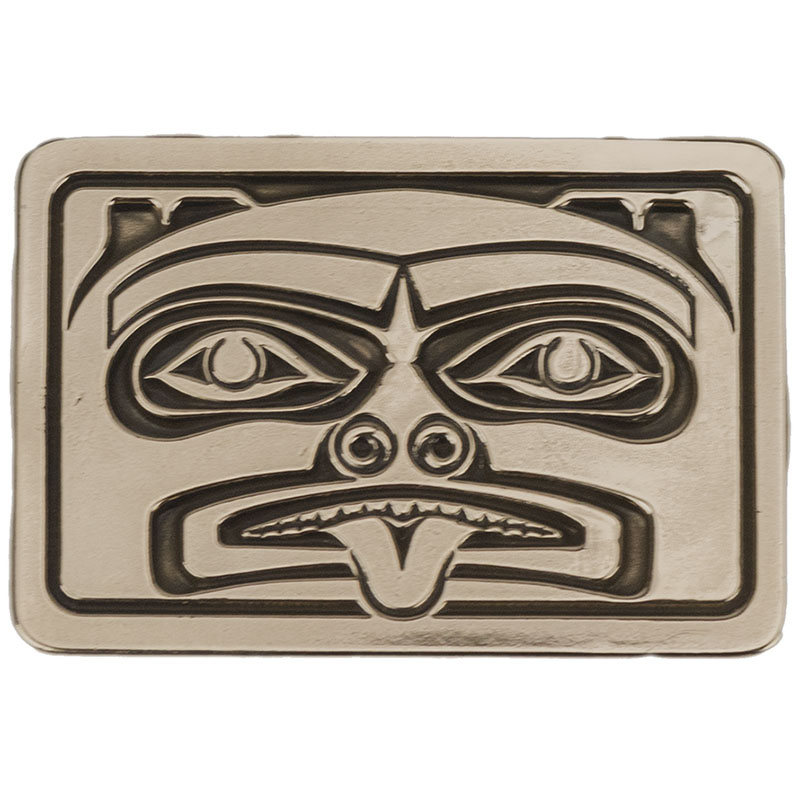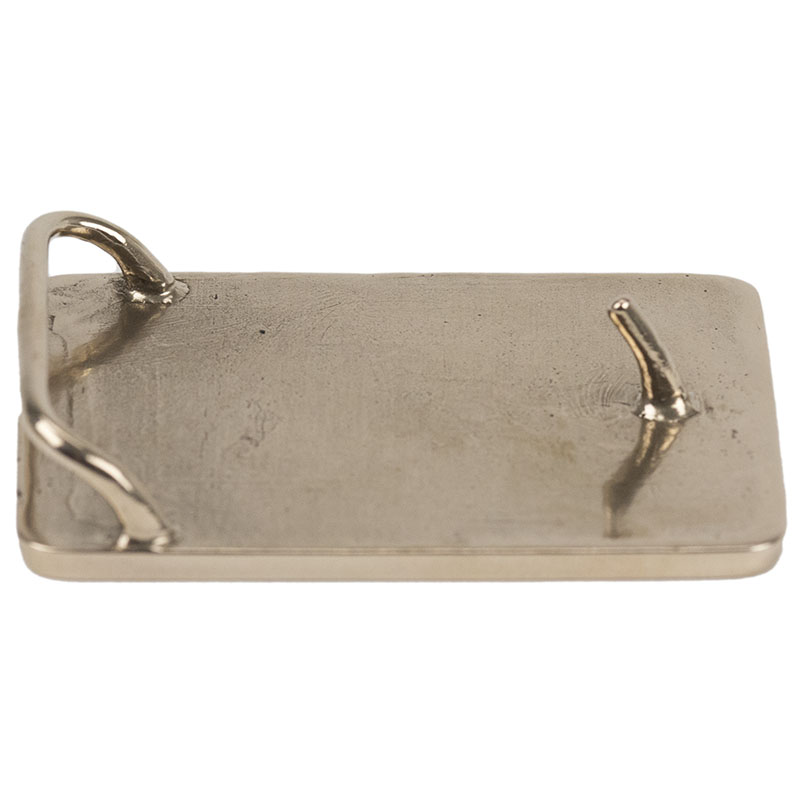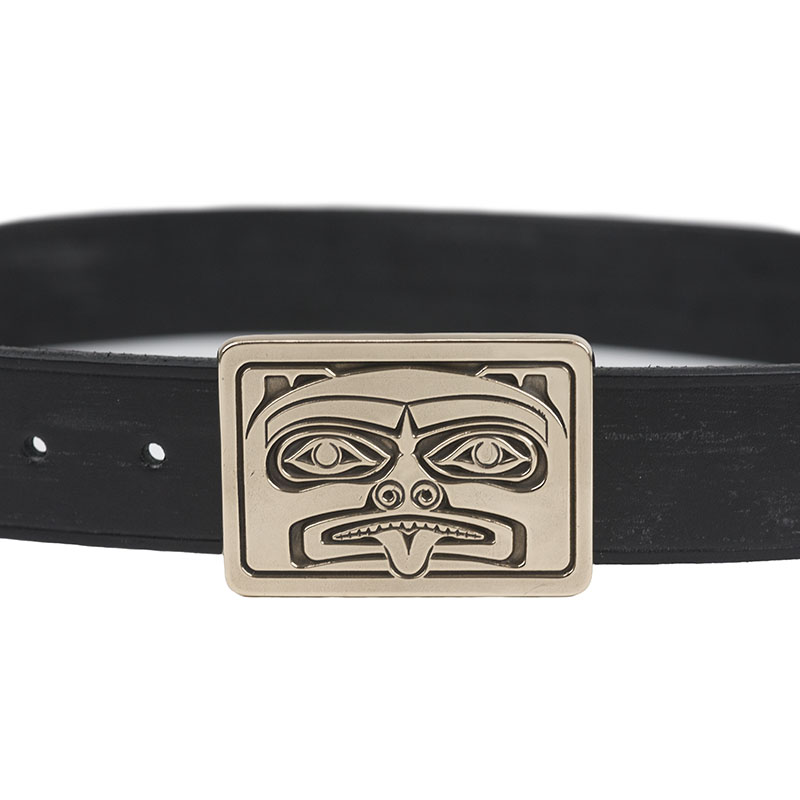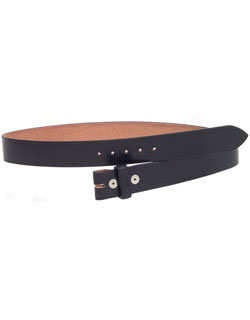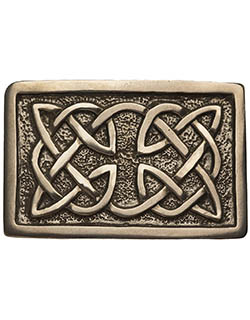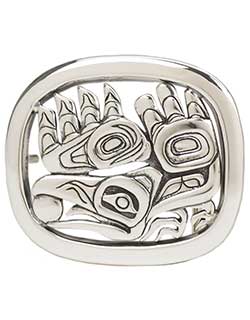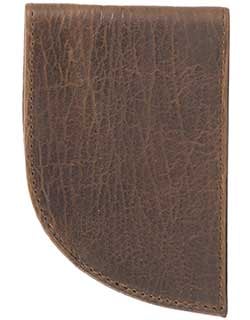Large Grizzly Bear Buckle, Bronze
Bears played a large part in the ceremonial life of the coastal tribes of the Pacific Northwest. This buckle designed by Raoul Le Blanc shows the grizzly bear with the characteristic protruding tongue and flaring nostrils. The buckle is about 2¾ x 2 inches, fitting 1½ inch belts, such as our 1½ inch Bridle Leather Belt. Solid bronze. Handcrafted in the USA by Fluid Bronze.
Bears played a large part in the ceremonial life of the coastal tribes of the Pacific Northwest. This buckle designed by Raoul Le Blanc shows the grizzly bear with the characteristic protruding tongue and flaring nostrils. The buckle is about 2¾ x 2 inches, fitting 1½ inch belts, such as our 1½ inch Bridle Leather Belt. Solid bronze. Handcrafted in the USA by Fluid Bronze.
-
More Info
These belt buckles are cast in bronze using the "lost wax" investment casting method by Fluid Bronze. Each buckle made in this age-old jeweler's technique must first be made in wax. The wax buckle is then "invested" or covered with a plaster of paris slurry and allowed to dry. It is then placed in a computer controlled electric kiln that slowly ramps up the temperature, eventually reaching 1500 degrees Fahrenheit for several hours hours before dropping back to 900 degrees. This process takes about 22 hours. During this process, all the wax in the plaster mold is burned out or "lost", the result is a cavity into which the molten metal is poured in. The 900 degree plaster mold is placed in a vacuum chamber and a powerful pump draws a vacuum on the hot plaster mold as the metal is poured in. This vacuum process creates greater detailed castings with a minimum of feeder gates to the piece. After cooling, the buckle casting is broken from the mold. At this point, the casting is black from the oxidation of the molten bronze or sterling silver and must be carefully ground, tooled and polished to achieve the final gleaming finish. The final finishing and tooling marks reflect the individuality of each buckle and attests to the craftsmanship involved in its unique creation.
-
Bears
Bears were held in great respect by the Coastal Indians because of their humanlike qualities. Bears that had been killed were taken to the chief's house and treated like guests. Prayers and dances were made to the soul of the bear so that harm would not later befall the hunters. The bear motif is often found carved and painted on totem poles and used in many other art works.
